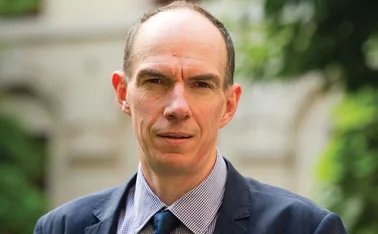
The Fed is being asked to do too much
High unemployment and excess capacity in the United States after a year of recovery has caused policymakers to look for new ways to accelerate growth.
Many members of Congress refuse to consider fiscal stimulus. As a result, there have been calls for the Fed to initiate another round of quantitative easing (QE) to stimulate activity by buying more US Treasuries and thereby expanding its balance sheet.
The Fed now seems unlikely to undertake more credit easing, which involves purchasing assets other than US Treasuries in order to unblock specific parts of financial markets, and which necessitates credit risk. However, more QE looks likely following the publication of the minutes of the most recent Federal Open Market Committee meeting. Analysts now largely expect further purchases of US Treasuries to be announced on 3 November.
The arguments for more QE are, as we see them, threefold. Firstly, those in favour argue more QE will induce more business and consumer spending by lowering intermediate and long-term interest rates. Secondly, QE may push the dollar lower and improve the trade balance. Thirdly, some may believe that QE would reduce the risk of a deflationary spiral.
Here, we will posit that the first argument - that QE will stimulate business and consumer spending and, therefore, growth - is largely incorrect.
Leverage
More QE will undoubtedly benefit large corporations. Such corporations are already benefiting from record-low interest rates through the issuance of bonds. Further, earnings data suggest these corporations were indeed quite profitable in recent quarters and had little need for cash. They are not likely to expand as long as aggregate demand appears weak. And, even though a dollar depreciation should spur aggregate demand and growth, US net exports may not respond quickly or significantly because they depend on factors that are not necessarily influenced by Fed policy.
The problems with aggregate demand are centred in the consumer sector, small businesses, and state and local governments. Further declines in market rates of interest can do little to change this situation. Instead, measures to bolster the income of groups with a high propensity to spend can be far more effective and can encourage a more broadly based economic expansion in the United States.
Why is this so? To answer this we need to look at the key reason why the US recovery has been so anaemic: household leverage.
In 2007, household leverage reached an all-time high of 133% of disposable personal income. Debt service to disposable income rose from roughly 13% in early 2002 to a high of close to 14% five years later. By the fall of 2010, this ratio had been reduced to a little more than 12%, the lowest in more than ten years. Another factor causing the current weakness in consumer demand is the substantial loss of wealth that resulted from the significant decline in house prices relative to the mortgages and other loans that consumers used for finance. Indeed, many consumers ended up with negative net equity in their homes and a large number still face foreclosure. Unlike business, which is often able to restructure long-term debt and avoid bankruptcy, this option turned out to be extremely difficult for consumers to pursue.
Weakness in US consumer demand has also been related to the continuing shift in the distribution of income in favour of the most wealthy. The middle class is now smaller and the share of income going to those at the high end of the income scale is much larger than it was before. Looking only at the top 1% of income earners, this group received 8% of national income in 1973 and 18% in 2008. This meant that the share of the bottom 99% fell from 92% to 82%. The deep recession aggravated this trend. In 2009, the Gini index found US income inequality at its highest level since the Census Bureau began tracking household income in 1967. The United States also has the greatest income disparity among Western industrialised nations. Empirical studies have demonstrated that the marginal propensity to consume rises as income declines. This corresponds to the intuition that people can only save after necessities have been met.
Would QE help the consumer? An econometric model developed by Lawrence Meyer, a former governor of the Fed, estimated that even a large amount of QE, say $2 trillion, would reduce long-term market interest rates by only 0.5%. And reductions in interest rates on government securities are not likely to help the unemployed and those at the lower end of the income scale buy more. If experience so far is any guide, consumer credit will not become markedly less expensive. Further reductions in mortgage interest rates should stimulate home demand. But worries about future continued declines in home prices appeared to have outweighed attractive financing costs. In addition, in the weak employment and housing environment consumers found it more difficult to be approved for a mortgage even with down payments higher than in the past.
Another symptom of the US's economic malaise is that small businesses are also struggling. Yet lower interest rates have so far done little to stimulate bank lending to small business. Stricter bank regulation and more paperwork have often been cited. But it is more likely that lending to small business looks too risky to banks. This makes sense if we consider that many small businesses most likely provide goods and services to consumers and not to major multinational corporations. If consumer demand is weak, the prospects for small business do not look especially healthy. Congressional passage of a small business-lending act in September 2010 may help a little, although it makes only $30 billion available to banks to lend on to small business.
To boot, while QE offers relatively little promise for accelerating US growth, it creates a potentially difficult situation for the Fed. When growth returns to trend and the Fed begins to tighten, its earnings may turn negative and deplete its capital. This would also mean that its substantial payments to the US Treasury- which totaled $45 billion in 2009 - could cease. This is a hidden cost to the US Treasury. Thus, QE could produce a surprising and undesirable outcome and one that would undoubtedly have major political implications.
Alternatives
Considering the limited hopes for QE, it is crucial to look at alternatives.
Instead of QE, macroeconomic policy actions should focus on stimulating income growth in lower- and middle-income groups. Improving disposable incomes of these groups would have a proportionally larger effect on total consumer spending. This, in turn would stimulate business expansion. Policy measures could include a reduction or holiday in payroll taxes paid by employees and an increase in government spending on ready-to-go infrastructure projects that have been delayed by financial pressures at the state, local and federal level.
This is preferable to using credit easing. If consumers are trying to reduce leverage, then subsidising their borrowing, directly or indirectly, is not likely to boost spending as much as bolstering disposable income. While tight credit availability to business may be a problem, making loans to them would seem less risky to banks if aggregate demand were stronger.
The fiscal changes suggested here would do more to get the US out of sluggish economic growth than QE. They would add to the US fiscal deficit initially, and concern about its size is reasonable. But it also follows that the sooner the economy starts to grow more quickly the sooner tax revenues start to expand and unemployment benefits as well as other automatic stabilisers decline. And let's not forget the potential hidden cost of QE to the US Treasury. More rapid economic growth surely helps reduce the federal deficit. More rapid growth also helps state and local governments in the US deal with the financial pressures aggravated by the deep recession.
All in all, QE seems a poor way to spur growth. It can worsen the US fiscal situation while doing relatively little to stimulate demand. It is worth reconsidering fiscal policy moves that produce more bang per buck.
Marcelle Arak is a professor of finance at the University of Colorado Denver. Sheila Tschinkel is principal, SLT Finance and Economics, and a former head of research at the Atlanta Fed.
Only users who have a paid subscription or are part of a corporate subscription are able to print or copy content.
To access these options, along with all other subscription benefits, please contact info@centralbanking.com or view our subscription options here: http://subscriptions.centralbanking.com/subscribe
You are currently unable to print this content. Please contact info@centralbanking.com to find out more.
You are currently unable to copy this content. Please contact info@centralbanking.com to find out more.
Copyright Infopro Digital Limited. All rights reserved.
As outlined in our terms and conditions, https://www.infopro-digital.com/terms-and-conditions/subscriptions/ (point 2.4), printing is limited to a single copy.
If you would like to purchase additional rights please email info@centralbanking.com
Copyright Infopro Digital Limited. All rights reserved.
You may share this content using our article tools. As outlined in our terms and conditions, https://www.infopro-digital.com/terms-and-conditions/subscriptions/ (clause 2.4), an Authorised User may only make one copy of the materials for their own personal use. You must also comply with the restrictions in clause 2.5.
If you would like to purchase additional rights please email info@centralbanking.com







